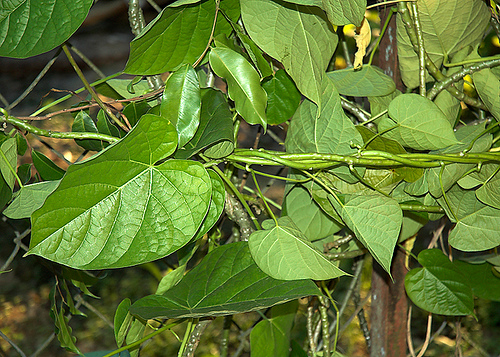Why Herb-gardens find a place in city life
An increased global interest in herbal health supplements, aroma therapy, Ayurveda and preservation of biodiversity may be responsible for the popularity of indoor and outdoor medicinal plants.
 Urban homes are discovering the benefits and joys of growing medicinal plants and herbs in their gardens. Medicinal flora like shankhpushpi, sadabahar, brahmi, amla, tulsi, pudina, ajwain, lemon grass, neem, haldi, kali mirch, aloe vera and wheat grass curry favour with green-fingered health freaks.
Urban homes are discovering the benefits and joys of growing medicinal plants and herbs in their gardens. Medicinal flora like shankhpushpi, sadabahar, brahmi, amla, tulsi, pudina, ajwain, lemon grass, neem, haldi, kali mirch, aloe vera and wheat grass curry favour with green-fingered health freaks.
There's no denying that an increased global interest in herbal health supplements, aroma therapy, Ayurveda and preservation of biodiversity may be responsible for the popularity of indoor and outdoor medicinal plants.
While Swami Ramdev's advice at public gatherings to plant saplings of medicinal trees and herbs like neem, mahua, tulsi, giloi, etc in and around their homes to mark a family celebration such as a birthday or wedding anniversary also carries weight.
In agreement with him, housewife Vinita Sharma manages a neat harvest of ashwagandha, nagdhon, malati, aloe vera and tulsi at home. "In consultation with books and and an elderly Vaidyaji, I use these plants in home remedies to alleviate BP, muscular pain and respiratory troubles among others," she says.
While Vinita was influenced by Swami Ramdev, artist Anita Narain nurtured a variety of medicinal and aromatic plants instinctively. Bubbling with excitement she speaks about her diverse collection and equally diverse sources, "I picked up black pepper saplings and haldi rhizomes from Kakori and a mosquito repellent herb from the suburbs of Jim Corbett National Park."
She professes that her collection of lemon grass, wheat grass, ajwain, sadabahar, krishna tulsi, amla, neem, sehjan and eucalyptus is a sensual treat: "Their presence and fragrance itself is so uplifting!"
"Rightly so," adds Dr Narendra Singh, director, International Institute of Herbal Medicine, and Organic India, "Herbs have tangible potency in their very being. Their aromatic content purifies the air, while their systematic use in medicines is, of course, gaining popularity at a dizzying speed. Growing these at home is a good way of staying connected with these sustainers of good health."
Lucknow based Central Institute of Medicinal and Aromatic Plants (CIMAP) goes with the doc's logic while promoting these plants through school children, government organisations, NGOs and farmers, according to deputy director Dr AK Singh.
As heightened awareness escalates the demand, local nursery wallahs are keeping up with the trend. Jagannath Singh, like his fellow nursery owners, effortlessly rattles off names, previously less familiar –"Shatavari, aloe vera, ashwagandha, sarpgandha... sab mil jayega, madam."
Clients are willing to pay almost anything, observes Jagannath, and chuckles under his breath, "What is this new craze about medicinal plants? We always had our neem, rendi, pakar, babool, tulsi and the rest. How could you forget them?" By the looks of it, urban India is fast jogging its memory on this front!
Giloi plant

Photo credit: Arup Kumar Choudhury, Flickr.com
Giloi plant is a climber. It has heart shaped leaves, and grows wild in India; North and South. It has a woody stem, which is cut into pieces and boiled for medicine. Spencer store has dry giloi stems for sale. Himalaya pharmaceuticals has giloi in capsules.
More about
Giloi...
